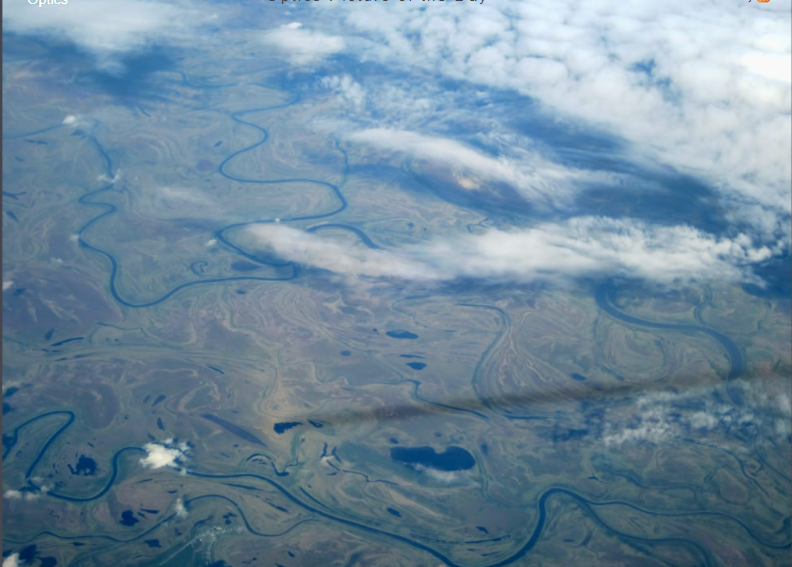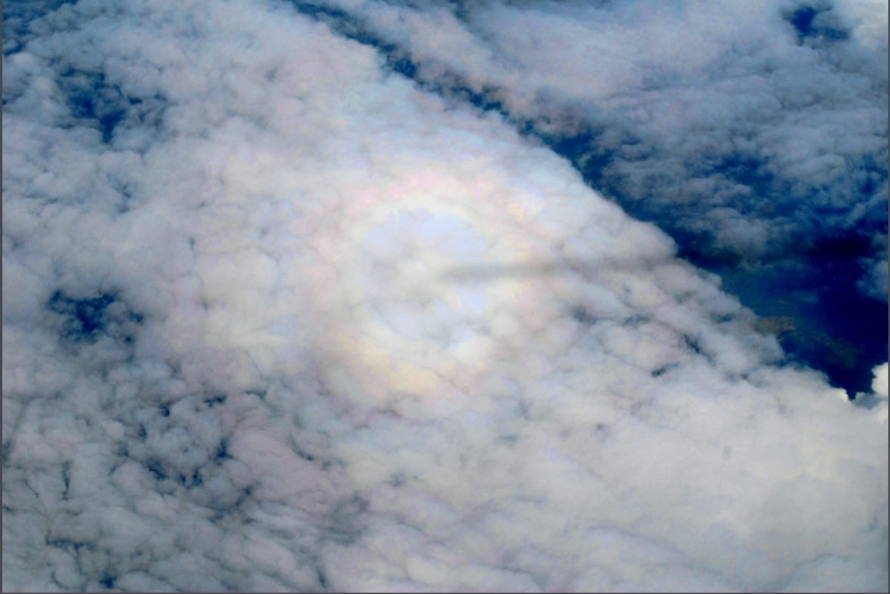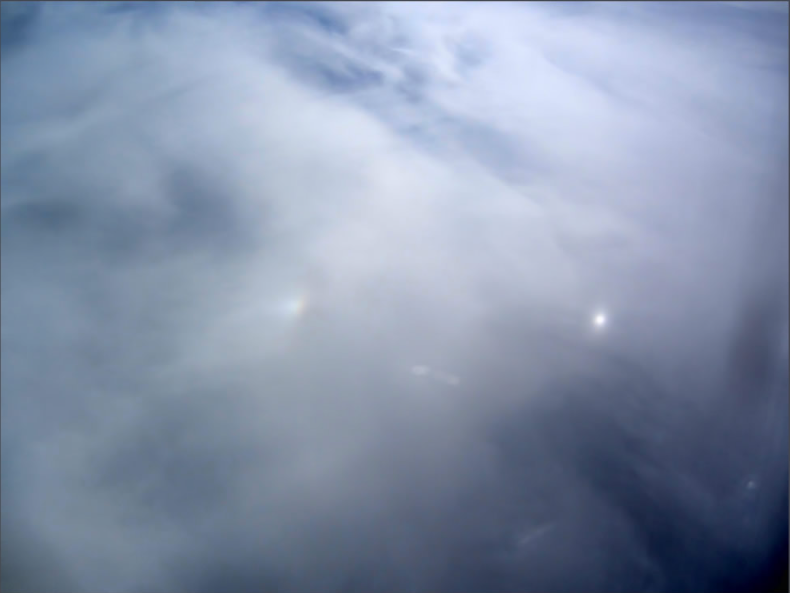OPOD - Siberian Optics
OPOD - Siberian Optics: Exploring the Enchanting Phenomena of the Sky
Siberia, a vast expanse of land adorned with meandering rivers and sprawling plains, is not only a sight to behold from the ground but also from the skies above. As aircraft traverse this majestic region, they leave behind a trail of contrails that cast intriguing shadows on the landscape below. These contrail shadows, sometimes visible for hours, add a linear feature to the otherwise curved and bending terrain.
At the head of these contrail shadows lies the antisolar point, directly opposite the sun. Here, an enchanting phenomenon known as the "opposition glow" occurs. Shadows cast by objects are concealed, resulting in a slightly lighter and more yellow appearance of the ground. In this damp and vibrant environment, it is possible that the heiligenschein, a phenomenon where light is scattered by water droplets or insects, may also contribute to the luminance of the area.
When sunlight interacts with small water droplets in clouds, another optical marvel known as the multi-ringed glory becomes visible at the antisolar point. This captivating display showcases a series of concentric rings surrounding a central bright spot. It is a testament to the intricate scattering and diffraction of light within these tiny droplets suspended in the atmosphere.
However, it is not only water droplets that can create awe-inspiring atmospheric optics in Siberia. When ice crystals dominate higher-level clouds, sub-horizon halos come into play. These halos manifest as arcs or circles of light below the horizon and are formed through the refraction and reflection of sunlight by these ice crystals.
Within this icy realm, two remarkable phenomena can be observed. The first is the subsun, which occurs when sunlight reflects off the upper and lower faces of hexagonal plate crystals. Millions of these crystals act as mirrors, creating a dazzling display of light that appears as a bright spot beneath the horizon. This radiant spectacle adds a touch of magic to the Siberian skies.
On the other hand, a subparhelion, a rarer sight, can also captivate observers. This phenomenon arises when rays of light enter a plate crystal's side face, undergo an odd number of internal reflections between its upper and lower horizontal faces, and exit through a side face inclined at a 60° angle to the first. The subparhelion stands apart from its more common counterpart, the sundog, by the number of internal reflections it experiences.
Siberia, with its vast and diverse atmospheric conditions, offers a rich tapestry of optical wonders. From the opposition glow to the multi-ringed glory, and from sub-horizon halos to the ethereal subsun and subparhelion, this region provides a visual feast for those fortunate enough to witness these atmospheric phenomena.
As we gaze upon the enchanting Siberian sky, let us marvel at the intricate interplay of light and matter that gives rise to these mesmerizing displays. Each phenomenon tells a unique story about the atmospheric conditions and the fascinating world we inhabit. So, next time you find yourself soaring above the Great Siberian Plain, keep your eyes peeled for these captivating optical treasures that dance among the clouds.

Siberian Optics
Images by Brigitta Sipocz.
The aircraft thunders over the Great Siberian Plain criss-crossed by meandering rivers that eventually drain their fresh waters via mightier rivers into the Arctic Ocean.
The shadow of the craft's contrail adds a linear feature to the landscape of curves and bends. Sometimes contrail shadows are visible for hours.
At the shadow's head, the antisolar point directly opposite the sun and where the airplane's shadow would be if it was lower, the ground is slightly lighter and more yellow. This is the 'opposition glow' where shadows are hidden by the objects casting them making the area look relatively brighter. In this damp and no doubt midge and mosquito filled place the heiligenschein might also be adding its luminance.

When the sunlight is scattered by small water droplets in cloud the antisolar point shows another optic - the multi ringed glory.

Replace the droplets of low and medium level cloud with the ice crystals of higher ones to see sub-horizon halos.
At right a subsun shines - the direct reflection of sunlight from the upper and lower faces of hexagonal plate crystals, millions of them acting as mirrors.
At left a rarer sight, a subparhelion. Rays enter a plate crystal side face, make an odd number of internal reflections between its upper and lower horizontal faces and then leave through a side face inclined 60° to the first.
For nearly every sundog there is probably, somewhere, a subparhelion. They are only distinguished by whether there are are an odd or even number of internal reflections.
Images ©Brigetta Sipocz
Note: this article has been automatically converted from the old site and may not appear as intended. You can find the original article here.
Reference Atmospheric Optics
If you use any of the definitions, information, or data presented on Atmospheric Optics, please copy the link or reference below to properly credit us as the reference source. Thank you!
-
<a href="https://atoptics.co.uk/blog/opod-siberian-optics/">OPOD - Siberian Optics</a>
-
"OPOD - Siberian Optics". Atmospheric Optics. Accessed on April 25, 2024. https://atoptics.co.uk/blog/opod-siberian-optics/.
-
"OPOD - Siberian Optics". Atmospheric Optics, https://atoptics.co.uk/blog/opod-siberian-optics/. Accessed 25 April, 2024
-
OPOD - Siberian Optics. Atmospheric Optics. Retrieved from https://atoptics.co.uk/blog/opod-siberian-optics/.